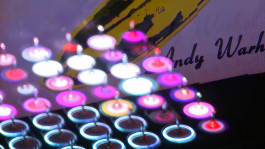
Interactive video device
Duration: indefinite
Dimensions: 170 x 170 x 170 cm
Weight: 75 kg
Materials: electronics, computers, audiovisual systems, wood, metal, glass mirrors and velvet wrapping Audiovisual Technique: digital video and audio capture, retouching and editing
Software Technique: Pure Data (Open Source), interactive audiovisual system design
Hardware Technique: electronic circuit design, hacked electronic devices and construction of physical wood and metal devices
Object of study: “The Velvet Underground & Nico” (1967)
Created by: Nestor Lizalde
Audio samples: Kim fasticks
Velvet-Transcode is a work of electronic art conceived to perform a “digital artistic study” of the milestone album The Velvet Underground & Nico. The record has been disbanded and reconstituted as a digital form made up of audio tracks fragments, projections, and a video-hologram. The user can recombine more than 1000 audio and video files interacting through a push button pad interface and reorganize the work both in an abstract and variable way so that he or she be drawn in to the object of study. The work experiments with the possibilities of representation within the so called New Media.
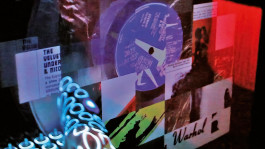
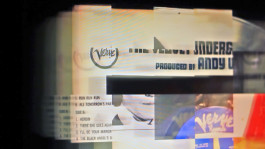
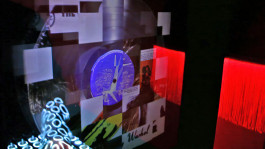
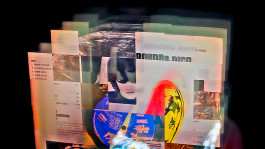
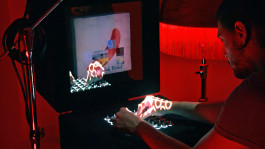
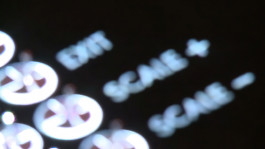
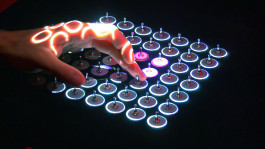
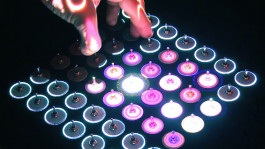
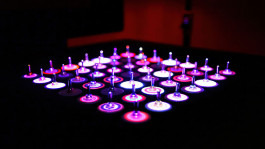
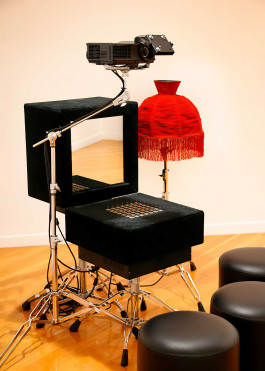
Object of study “The Velvet Underground & Nico” (1967)
The topic of this study is the LP “The Velvet Underground & Nico”, produced by Andy Warhol in 1967. It has eventually become a countercultural icon of the 60´s. The cover design consists of a sticker and right beside it is written “Peel slowly and see”, revealing some sort of phallus-shaped object. It is the author´s invitation to the object by fostering a participative mood, the interactive approach this project fully endorses.
As a painter would focus his eye on an object for his pictorial study, to then capture it on the canvas through colour, technique & materials, so does Velvet-Transcode Project; the object is captured by digital means and re-built afterwards upon an electronic device, thus exploring the multiple possibilities this new medium offers: Programming, variability, interactivity, spatial narration and multiple time lines.
The record as a whole has been digitally scanned and brought into audio and video fragments. The machine, then, allows recombining those fragments through interaction with the pushbuttons, constantly showing a different visual representation of the object of study.
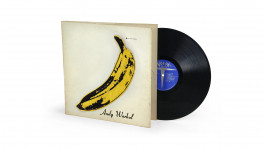
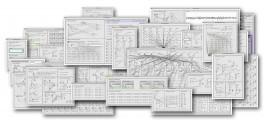
Interface device
The audiovisual data will be modified by the user by means of this device, holding forty-nine double-signal switchers. If pressed upwards, it will modify the piece of video corresponding to its own position in the virtual image. If pulled backwards, it will erase or load the audio fragment shown as light thrown onto this specific switcher. The device includes an internal sound system, two Apple computers and other equipment required to link the units to the switchers. The computers´ hard disks have been replaced by SSD solid memory units, allowing instant access to the data.
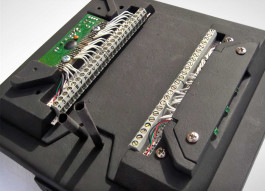
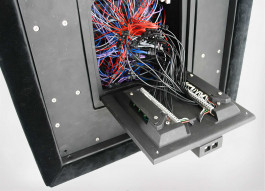
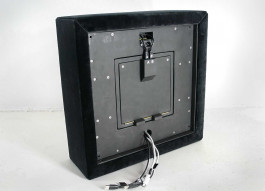
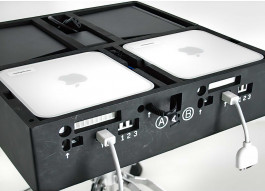
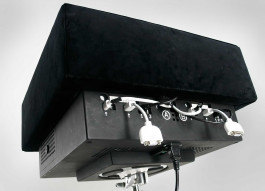
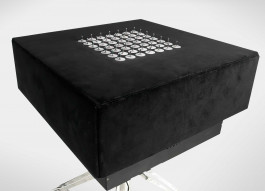
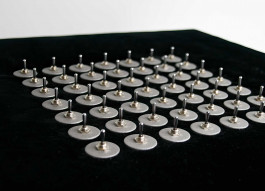
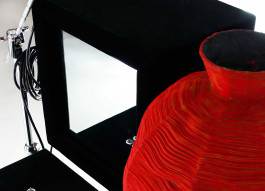
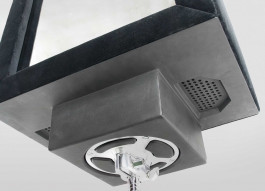
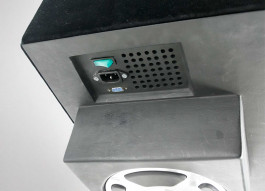
The image shown in the device consists of forty-nine video tracks played in an fragmentary way to present the album as an unstable, changing object. The timelines controlling each of the framed picture are independent one from the other in order to create this mosaic pattern. The user, thus, will alter the video content, changing the mosaic through the interface, already discussed. The “floating mosaic” illusion has been developed by using a “mirror facing mirror” deceiver trick. As a result, one can see several holographic levels, that fade away progressively. The experimental nature of this technique, specifically developed for the current project will surely find application in further works.
The installation
The set is self-sufficient. It contains all that it needs for a full-functioning, except for access to electric current in the room. The set, consequently, carries its own lightning: a red-light low-power lamp projector placed over the switchers deck and a tripod to keep it stable.
Also, a dirigible looking glass has been attached to the projector so the projected light will match the switchers. Since the video device creates an optical illusion, the sys- tem shall only be installed in a dark, shut, room, away from any other light source.
* The devices included in this installation have been specifically built for this work.
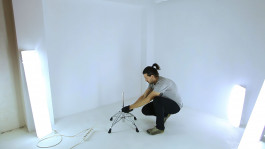
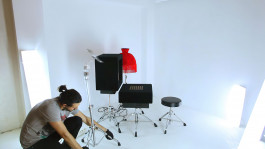
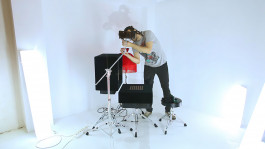
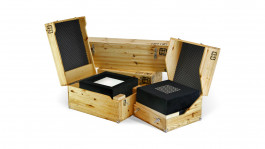
nestorlizalde@gmail.com
+34 659 751 761
© 2024
↑
nestorlizalde@gmail.com
+34 659 751 761
© 2024
↑